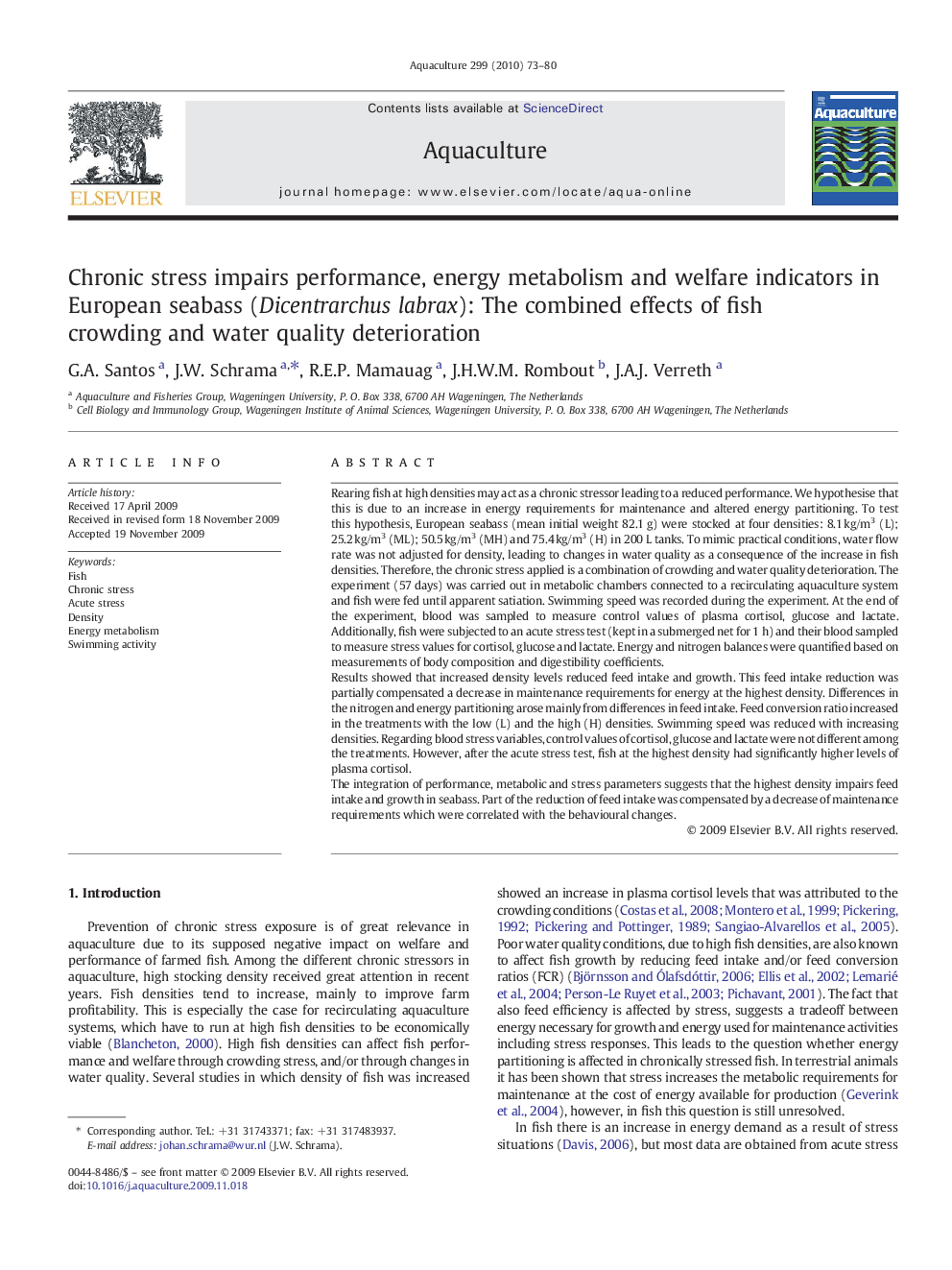| کد مقاله | کد نشریه | سال انتشار | مقاله انگلیسی | نسخه تمام متن |
|---|---|---|---|---|
| 2423774 | 1552930 | 2010 | 8 صفحه PDF | دانلود رایگان |

Rearing fish at high densities may act as a chronic stressor leading to a reduced performance. We hypothesise that this is due to an increase in energy requirements for maintenance and altered energy partitioning. To test this hypothesis, European seabass (mean initial weight 82.1 g) were stocked at four densities: 8.1 kg/m3 (L); 25.2 kg/m3 (ML); 50.5 kg/m3 (MH) and 75.4 kg/m3 (H) in 200 L tanks. To mimic practical conditions, water flow rate was not adjusted for density, leading to changes in water quality as a consequence of the increase in fish densities. Therefore, the chronic stress applied is a combination of crowding and water quality deterioration. The experiment (57 days) was carried out in metabolic chambers connected to a recirculating aquaculture system and fish were fed until apparent satiation. Swimming speed was recorded during the experiment. At the end of the experiment, blood was sampled to measure control values of plasma cortisol, glucose and lactate. Additionally, fish were subjected to an acute stress test (kept in a submerged net for 1 h) and their blood sampled to measure stress values for cortisol, glucose and lactate. Energy and nitrogen balances were quantified based on measurements of body composition and digestibility coefficients.Results showed that increased density levels reduced feed intake and growth. This feed intake reduction was partially compensated a decrease in maintenance requirements for energy at the highest density. Differences in the nitrogen and energy partitioning arose mainly from differences in feed intake. Feed conversion ratio increased in the treatments with the low (L) and the high (H) densities. Swimming speed was reduced with increasing densities. Regarding blood stress variables, control values of cortisol, glucose and lactate were not different among the treatments. However, after the acute stress test, fish at the highest density had significantly higher levels of plasma cortisol.The integration of performance, metabolic and stress parameters suggests that the highest density impairs feed intake and growth in seabass. Part of the reduction of feed intake was compensated by a decrease of maintenance requirements which were correlated with the behavioural changes.
Journal: Aquaculture - Volume 299, Issues 1–4, February 2010, Pages 73–80